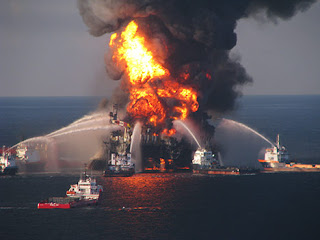The slow-motion ecological catastrophe in the Gulf of Mexico is
horrifying.
The oil slick is now the size of Ohio, and growing by the hour. Edges of it are now reaching land and all along the Gulf coast residents wait with deep foreboding and growing anger as the dimensions of the disaster become clear.
This is not an oil spill, but
an oil spilling, as more ruptures from the sea floor, surfaces, and spreads its devastating reach towards shore. 40% of the coastal wetlands in the United States are under threat, as are the majority of the country's oyster and shrimp fisheries. Local fishermen have moved quickly through the
5 stages of grieving as they face the
imminent destruction of their livelihood, economic security, their way of life, and their future.
Emergency response began quickly and broad efforts at mitigation are underway. The Obama Administration
formed a National Response Team, Louisiana Governor Bobby Jindal is
mobilizing the state's National Guard, and
locals are taking to their boats to deploy booms to intercept the sprawling slick. Dealing with the immediate crisis is paramount now, yet soon hard questions must be asked, and honestly answered. The critical questions are:
Why did this happen? How do we prevent it happening again?














